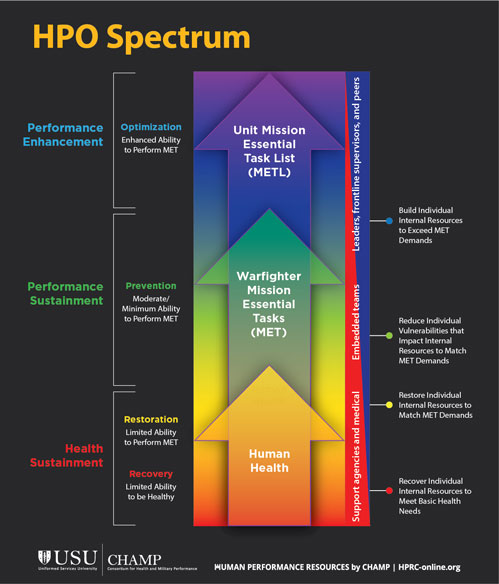Human performance spans from a baseline of health maintenance (no injury or illness) to optimal performance. What does this mean from a physical fitness perspective?
Physical activity and exercise also exist on a spectrum. Physical activity is exactly what it sounds like—any activity that requires movement. It’s usually described on a 3-point scale of light, moderate, and vigorous. Exercise is physical activity that’s repetitive, structured, and progressive. Exercise can also be described on the same light to vigorous scale, though there are more precise ways to measure intensity, including tracking heart rate and the amount of weight lifted during resistance training
Maintaining physical fitness for health is fairly straightforward. When you get enough physical activity or exercise to meet the current recommendations—150 minutes per week of moderate-intensity activity—you can reduce your risk of physical and mental health conditions, such as heart disease, cancer, obesity, depression, and anxiety.
Getting enough physical activity every week is also strongly linked to delaying “all-cause mortality” (death for any reason). To put it simply, the more physically active you are, the longer you’ll live. This doesn’t necessarily take into account other lifestyle factors, such as using your seatbelt, smoking habits, or other risky behaviors. Daily time spent sitting is also linked to all-cause mortality. As daily sitting time increases past 4 hours per day, so does the risk of dying sooner. But being physically active can offset that risk. By meeting the physical activity guidelines every week, you can substantially increase your life expectancy, especially for those who sit for at least 8 hours a day.
Even if you structure your physical activity to optimize your health, that won’t necessarily make you fit enough to do a physically difficult job or be highly resilient to physical demands. Physical fitness for performance, or your ability to do your job or perform athletically, requires more specific training than health-based fitness. While basic physical activity is enough for general health benefits, performance benefits require regular exercise. You need the key components of exercise—repetition, structure, and progression—to adapt physically and improve your performance related to those physical demands. Physical training for performance optimization is ideally functional and meets the needs of your job’s physical demands.
You need the key components of exercise—repetition, structure, and progression—to adapt physically and improve your performance related to those physical demands.
Physical fitness can also be seen as following the HPO spectrum below. When you’re doing enough to sustain basic health requirements (yellow and red), you aren’t necessarily able to fully perform you job duties. As you exercise more, structuring your workouts to meet your physical demands, you’re better able to meet basic physical requirements (green).

Over time, as your training progresses, you can move into the optimal state (purple). In this zone, physical demands are relatively easy. Your Service’s fitness test would be considered more of a formality, where you’re working to max it, as opposed to simply trying to pass it. You are resilient to the physical stressors of work and other physical demands, able to recover quickly after work and exercise, and have a relatively low risk of injury. The purple zone applies to more sedentary jobs as well. If you’re more physically fit, you can reduce your chances of suffering from neck or back pain, or getting hurt when working out or playing sports. Read HPRC’s article about human performance optimization to learn more about health, performance, and the HPO spectrum.
